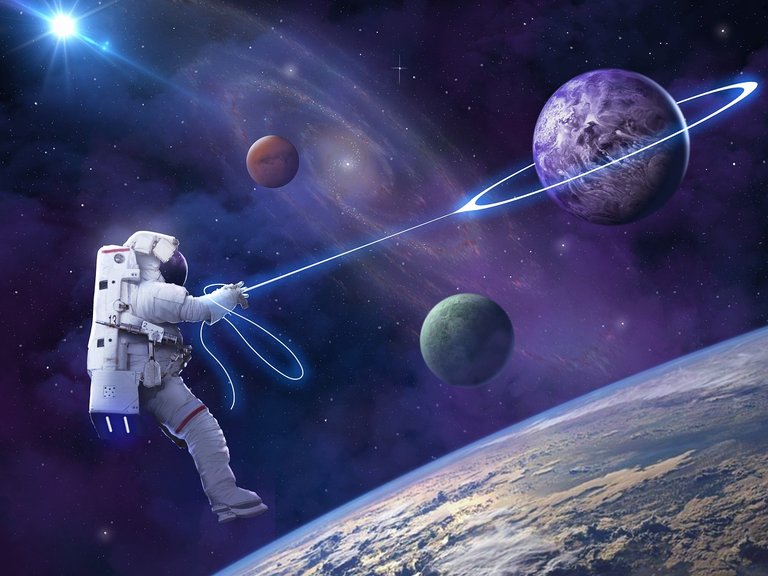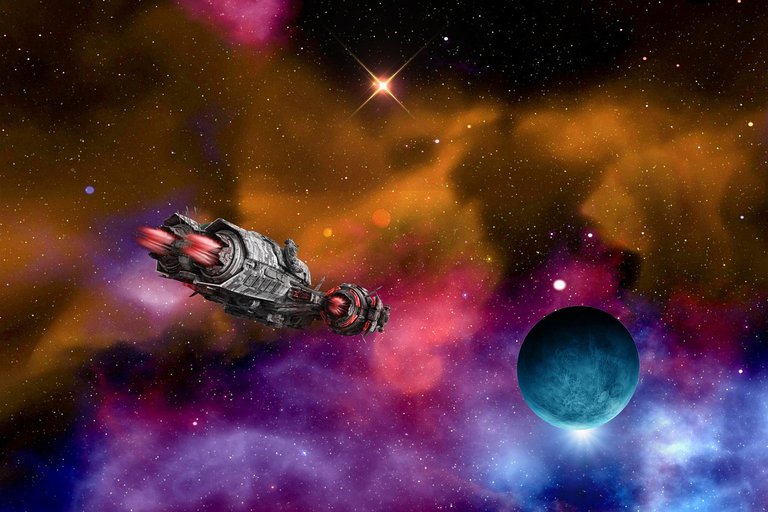CIVILIZATIONS AND ENERGY, KARDASHEV SCALE
Since time Immemorial, Humanity has always been evolving, from starting fires to making artificial Suns, from making water wheels to building dams, from deadly arrows to World ending missiles, as far as we live, humanity will continue to advance, but how far can we advance, can we advance far enough to rival the omniscience and omnipotence of our Creator, let's find out.

"We physicists rank civilization not by politicians and great men and great leaders, we rank them by energy" - Michio Kaku. Energy produced and energy consumed are the leading factors in determining how advanced a civilization is. A paramount scale has been devised to classify Civilizations according to Energy, it is known as the Kardashev Scale. The Kardashev Scale is a theoretical framework for measuring a civilization's technological advancement based on its ability to harness and utilize energy. Proposed by Soviet astronomer Nikolai Kardashev in 1964, it laid the groundwork for Civilization classification.

It was initially proposed in his paper "Transmission of Information by Extraterrestrial Civilizations" at the Byurakan Conference, the Scale serves as a tool for the Search for Extraterrestrial Intelligence (SETI) to classify hypothetical advanced civilizations. The scale assumes exponential technological growth, using human civilization as a baseline to measure other Civilizations, and is grounded in the immutability of physical and cosmic laws.
The scale defines three main types of Civilizations, each having their specific energy consumption levels and characteristics. Several scientists have extended and refined the scale to account for intermediate levels and speculative higher types of Civilizations.

TYPES
Type I (Planetary Civilization): A Type I civilization can access and store all energy available on its home planet, estimated to be at least 10^16 and at most 10^18 watts, such energy can currently power 8 to 800 trillion households. This includes mastering all renewable and non-renewable resources available, from geothermal energy buried within the depths earth to the rays of the Sun that fall on the earth and even the energy gotten from disasters like tsunamis and hurricanes, a Type 1 civilizations controls and toys with them, achieving global energy grids, and potentially controlling all natural disasters, turning the liability of disasters into assets. In “The Expanse" Series by James S.A. Corey Humanity in these novels has nearly achieved Type 1 status.

Achieving Type I status would require global cooperation, which is currently unattainable, sustainable energy solutions like fusion, and control over planetary systems. Michio Kaku, in this predicts this could take 100–200 years at a 3% growth rate, though challenges like climate change and resource depletion pose risks to this prediction.
Type II (Stellar Civilization): At this level, a civilization harnesses the energy of its Star, approximately 10^26 watts (average consumption of 80 sextillion households), which is the total luminosity of a star like the Sun. This might involve constructing hypothetical structures like Dyson Spheres or Swarms, enabling interstellar travel and colonization. A stellar civilization becomes almost immune to any kind of extinction because they've successfully migrated to other planets and possibly solar systems.

A type 2 civilization would have full control over its entire solar system, possibly moving planets, redirecting asteroids, and engineering large-scale space habitats and colonies. There would be virtually unlimited energy supply, enabling technological advancement in transportation, communication, medicine, and manufacturing, a Type 2 civilization can potentially eliminate material scarcity and extend lifespans indefinitely. Fictional examples of Type 2 civilizations include:
United Federation of Planets (Star Trek)
Galactic Empire (Star Wars)
The Borg (Star Trek)
Protoss and Zerg (StarCraft)
Type III (Galactic Civilization): A Type III civilization can utilize the energy of an entire galaxy, on the order of 10^36 watts (10 billion times the power of our measly Sun), equivalent to the Milky Way's total luminosity (~4 × 10^44 erg/sec, or 4 × 10^37 W). This level, would involve advanced technologies to tap into galactic-scale resources, potentially communicating across galaxies.

This level of civilization can manipulate stars and planets on a galactic scale, such as moving planets, merging solar systems, absorbing supernovae, and even creating new stars, This civilization could even live near or inside supermassive black holes in stable orbits, making detection difficult for even a type 2 civilization and downright impossible for our current civilization. The Galactic Empire from Star Wars, which controls an entire galaxy with extensive reach and power is a Hypothetical example of a type 3 civilization

Beyond Type III: Speculative extensions include:
Type IV: Such Civilization would be able to harness energy from a galaxy cluster, estimated to be around ~10^46 watts, involving manipulation of extragalactic resources like dark energy, as suggested by Michio Kaku in this Futurism piece. A type 4 civilization would have mastery over energy from multiple, if not every galaxy and the entire universe. They would completely map out and completely understand all alien life and cosmic phenomena, terraform planets, engineer life forms, and create hybrid biological-technological beings. They would control cosmic forces to prevent universal entropy or collapse and potentially explore beyond the multiverse and higher-dimensional realms. Such a civilization would pose a threat to the Heavenly.

Type V: A Type 5 civilization would harness the energy of the entire universe, ~10^56 watts, a concept discussed in theoretical physics but highly speculative and is only hypothetical. They would have the ability to travel freely across any point in any universe, including different timeline at will alongside the capacity to create and destroy entire universes at will. Mastery over all known and unknown laws of physics and mathematics would be at their fingertips, and they would fectively have complete control over reality. They would exist possibly beyond physical form, as pure consciousness or energy, with life and death losing their meaning. I'm a Christian no doubt, but a type 5 civilization would rival and possibly surpass God, Maybe God is from a type 5 Civilization.

Fractional Types (Carl Sagan's Interpolation): In 1973, Carl Sagan introduced a logarithmic formula to classify civilizations between the main types, given by (K = (\log_{10} P - 6)/10), where (K) is the Kardashev type and (P) is power in watts. This allowed for finer granularity, estimating humanity's status in the 1970s at Type 0.7 with ~10 TW consumption. By 2021, human energy use had risen to ~18.87 TW, placing us at Type 0.73.

The Kardashev Scale offers a compelling vision of technological evolution and the technological future , from planetary to galactic scales, but its focus on energy consumption highlights both potential and peril. As of May 30, 2025, humanity's Type 0.73 status underscores the long road ahead, with Type I potentially centuries away and higher levels millennia or possibly unattainable. The scale's speculative nature and debates on feasibility and ethics ensure it remains a topic to fascinate and contend about in scientific and public discourse.

All images were gotten from pixabay and generated by Grok.
Your post has been curated and upvoted by Ecency!
Stay on track and keep up the good work!
Join us on the Ecency Discord